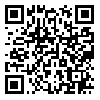Volume 9, Issue 3 (11-2019)
2019, 9(3): 1-11 |
Back to browse issues page
Download citation:
BibTeX | RIS | EndNote | Medlars | ProCite | Reference Manager | RefWorks
Send citation to:



BibTeX | RIS | EndNote | Medlars | ProCite | Reference Manager | RefWorks
Send citation to:
Farhadfar S, Keshavarzi M, Ladan A, Bouzari N, Atashkar D. Winter Cold Tolerance in Cherry (Prunus avium) and Its Association with Electrical Conductivity and a Number of Morphological Traits. Journal of Crop Production and Processing 2019; 9 (3) :1-11
URL: http://jcpp.iut.ac.ir/article-1-2347-en.html
URL: http://jcpp.iut.ac.ir/article-1-2347-en.html
horticultural resaerch institute , kmasureh@gmail.com
Abstract: (4448 Views)
Winter cold is a significant damaging factor in fruit trees specially stone fruits. Relative resistance of 20 local and introduced sweet cherries (Prunus avium) to winter cold in artificial cold condition and its association with electrical conductivity and a number of morphological traits including trunk diameter, shoot diameter, anthocyanine and lenticels frequencies was studied in year 2011. In February, dormant shoots and buds were collected and treated in a freezer with temperatures decreasing from 4 OC to -24 OC and increasing from -24 OC to 4 OC. Then, cold damage was determined based on percentage of discoloration from green to brown. Results showed variability of shoot and bud cold tolerance among different genotypes/cultivars. Cold damage to buds was higher than shoots and they showed significantly positive correlation. In both organs, Albaloogilas Daneshkadeh was rated as the most resistant and Meshkinshahr as the most susceptible genotypes. According to the observed responses to the low temperature treatment, the germplasm was divided in three relative susceptibility groups including highly susceptible (10%), relatively susceptible (15%) and relatively resistant (75%) and no genotype was completely resistant. Accordingly, it is concluded that most genotypes/cultivars studied were relatively tolerant to winter cold. A correlation existed between cold damage and shoot diameter, indicating that this species is more cold-susceptible at the seedling stage. Considering low correlation between cold damage and lenticel numbers/anthocyanin pigment intensity, these traits are not appropriate criteria for winter cold tolerance selection in cherry.
Send email to the article author
| Rights and permissions | |
 | This work is licensed under a Creative Commons Attribution-NonCommercial 4.0 International License. |







